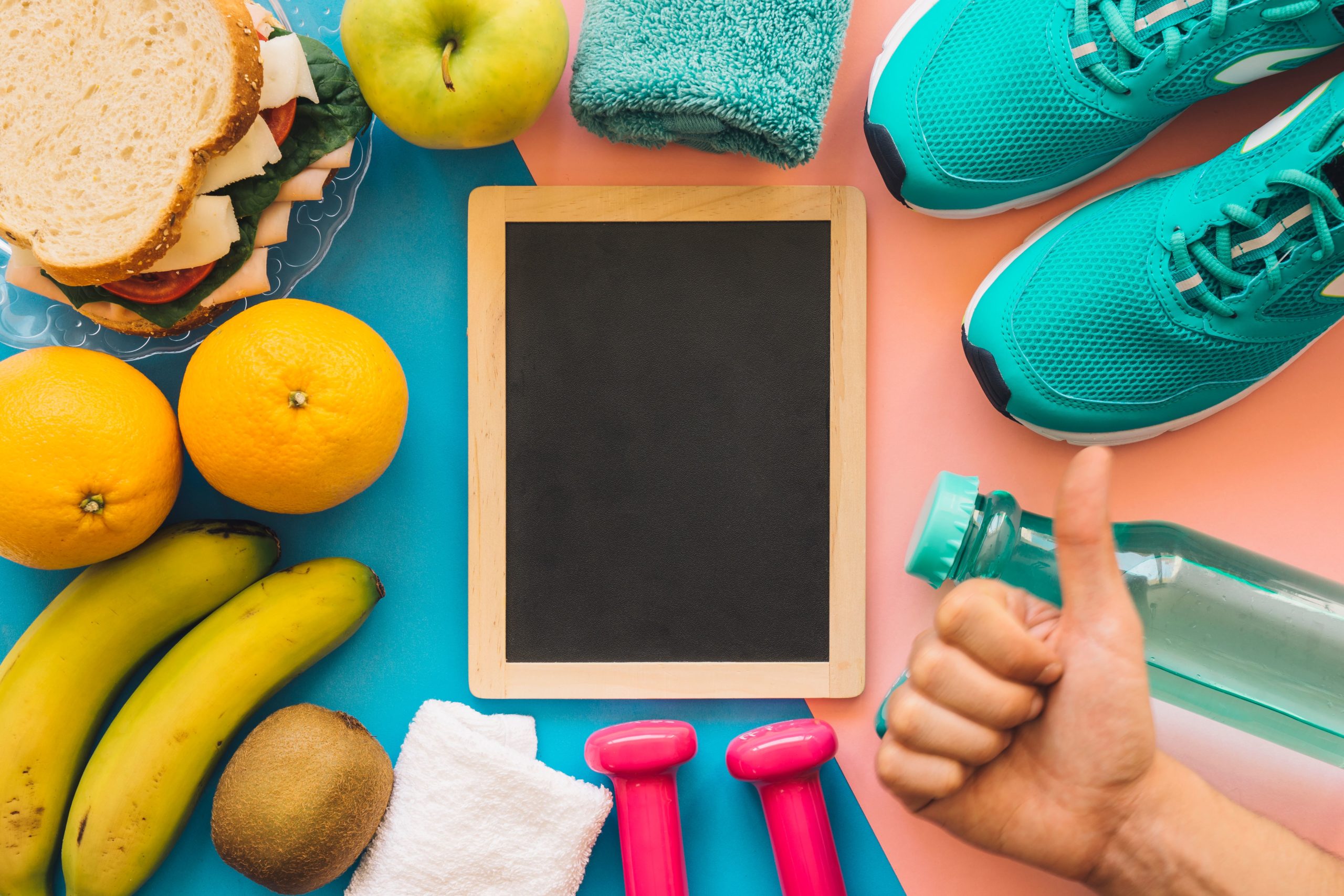
Best Ways to Keep Sugar Under Control for a Diabetes Free Life
30-07-2023 | Posted By: Admin | 1223 View(s)
Sugar has become an integral part of our modern diet, lurking in a variety of foods and beverages. While it provides a quick burst of energy, excessive sugar consumption can have detrimental effects on our health, leading to obesity, diabetes, heart disease, and more. Regulating sugar intake is crucial for maintaining a healthy lifestyle.
In this blog, we will explore some of the best ways to keep sugar under control to beat Diabetes and make informed choices to improve our overall well-being.

1.Educate Yourself
The first step in managing sugar intake is to understand its sources and hidden names on food labels. Sugars can be found in obvious items like candy, cakes, and sodas, but they are also present in seemingly healthy options such as fruit juices, granola bars, and flavored yogurts. Familiarize yourself with the various names for sugar, such as high-fructose corn syrup, sucrose, dextrose, and maltose, to name a few. By being aware of where sugar hides, you can make better choices when selecting your meals and snacks.
2.Plan Balanced Meals.
Designing balanced meals with a mix of macronutrients is perhaps one of the best Best Ways to Keep Sugar Under Control .It can help stabilize blood sugar levels and prevent sugar cravings. Aim for meals that include a combination of complex carbohydrates, protein, and healthy fats. Balanced meals can provide sustained energy and reduce the likelihood of reaching for sugary snacks to combat hunger or fatigue.
Planning a balanced meal is essential for keeping blood sugar under control, especially for individuals with diabetes or those looking to manage their sugar intake. A balanced meal includes a combination of macronutrients – carbohydrates, proteins, and fats – along with a variety of nutrient-rich foods. Here’s a step-by-step guide to planning a balanced meal to help regulate blood sugar levels:
-Focus on including complex carbohydrates in your meal. These are high in fiber, which slows down the digestion and absorption of sugars, leading to a more gradual increase in blood sugar levels. Good sources of complex carbohydrates include:
Whole grains: Brown rice, quinoa, oats, barley, whole wheat pasta, etc.
Legumes: Lentils, chickpeas, black beans, kidney beans, etc.
Vegetables: Broccoli, spinach, cauliflower, sweet potatoes, etc.
-Incorporate Lean Proteins:Proteins help stabilize blood sugar levels and provide a feeling of fullness. Choose lean sources of protein to minimize saturated fats.
-Include Healthy Fats:Healthy fats are essential for overall health and can help slow the absorption of carbohydrates, preventing rapid spikes in blood sugar. Some sources of healthy fats include:
Avocado
Nuts and seeds (e.g., almonds, chia seeds, flaxseeds)
Olive oil or avocado oil (for cooking and dressing)
Fatty fish (e.g., salmon, mackerel)
Natural nut butters (e.g., almond or peanut butter)
-Add Non-Starchy Vegetables:
Non-starchy vegetables are low in carbohydrates and calories but high in fiber, vitamins, and minerals. They help add volume and nutrients to your meal without significantly impacting blood sugar levels. Some examples of non-starchy vegetables include:
Leafy greens (spinach, kale, lettuce)
Bell peppers
Cucumbers
Tomatoes
Zucchini
Cauliflower
Broccoli
-Control Portion Sizes:
Be mindful of portion sizes to avoid overeating, which can lead to blood sugar spikes. Use smaller plates and pay attention to hunger and fullness cues.
-Minimize Added Sugars and Processed Foods:
Avoid foods and beverages that are high in added sugars, such as sugary drinks, sweets, and processed snacks. These can cause rapid fluctuations in blood sugar levels.
3.Read Food Labels
Develop the habit of reading food labels meticulously. Pay attention to both the total sugar content and the serving size. Food manufacturers often use small serving sizes to make products appear lower in sugar than they really are. Compare different brands and opt for products with the lowest sugar content per serving. Choose foods that contain natural sugars, like those found in fruits, rather than added sugars.
4.Consume Whole Foods
Processed foods are notorious for containing high amounts of added sugars. To keep your sugar intake in check, prioritize whole foods such as fruits, vegetables, whole grains, lean proteins, and healthy fats. Whole foods not only contain essential nutrients but also generally have lower sugar content than processed alternatives.

5.Be Mindful of Beverages
Sugar-sweetened beverages, including soft drinks, fruit juices, and energy drinks, contribute significantly to excessive sugar intake. Opt for water as your primary beverage and flavor it naturally with slices of citrus fruits or berries. If you crave sweetness, choose herbal teas or homemade fruit-infused water. Gradually reduce your consumption of sugary drinks to help lower your sugar intake significantly.It is the one of the most proven Ways to Keep Sugar Under Control.
6.Control Your Sweet Tooth
If you have a sweet tooth, it can be challenging to resist sugary treats. Instead of indulging in sugary snacks, try satisfying your cravings with healthier alternatives. For example, swap candy for a small piece of dark chocolate or replace ice cream with frozen yogurt topped with fresh fruits. Additionally, gradually reduce the sugar content in your recipes when cooking or baking to acclimate your taste buds to less sweetness.
7.Ways to Keep Sugar Under Control:Manage Stress Effectively
Stress can have a significant impact on blood sugar levels, especially for individuals with diabetes. When a person experiences stress, the body releases stress hormones, primarily cortisol and adrenaline, as part of the “fight-or-flight” response. These hormones trigger a series of physiological changes to prepare the body to cope with the perceived threat or stressor. One of these changes is the release of glucose (sugar) into the bloodstream, providing the body with a quick source of energy to respond to the stress.
For people without diabetes, the body’s natural insulin response helps regulate the increased glucose in the bloodstream, bringing it back to normal levels once the stressor is resolved. However, for individuals with diabetes or those who are insulin resistant, this stress-induced spike in blood sugar can be problematic.
Managing stress is crucial for individuals with diabetes to maintain stable blood sugar levels and overall health.
Here are some strategies to help reduce stress:
Regular Exercise: Engaging in physical activity can help reduce stress and improve insulin sensitivity. Aim for activities you enjoy, such as walking, swimming, or yoga.
Mindfulness and Relaxation Techniques: Practices like meditation, deep breathing, and progressive muscle relaxation can help lower stress levels.
Support System: Seek support from friends, family, or support groups to share your feelings and concerns.
Time Management: Organize your daily activities and set realistic goals to reduce feelings of overwhelm.
Hobbies and Interests: Engage in activities you love, whether it’s reading, painting, gardening, or any other hobby that brings you joy and relaxation.
Professional Help: If stress becomes overwhelming or difficult to manage, consider seeking support from a mental health professional or counselor.
By proactively managing stress, individuals with diabetes can help prevent stress-induced fluctuations in blood sugar levels and enhance their overall diabetes management plan. As always, it’s essential to work closely with healthcare providers to monitor blood sugar levels, adjust medication as needed, and make necessary lifestyle changes to effectively manage diabetes and stress.

8.Sleep Well
Sleep plays a crucial role in keeping blood sugar levels under control, especially for individuals with diabetes or those at risk of developing diabetes. Adequate and restful sleep is essential for overall health and well-being, and it directly influences how the body processes and regulates glucose
Tips for Improving Sleep to Support Blood Sugar Control:
-Establish a Consistent Sleep Schedule: Aim to go to bed and wake up at the same time each day, even on weekends. This helps regulate the body’s internal clock and improves sleep quality.
-Create a Relaxing Bedtime Routine: Develop a calming pre-sleep routine to signal to your body that it’s time to wind down. This may include activities like reading, taking a warm bath, or practicing relaxation exercises.
-Limit Stimulants and Electronics: Avoid caffeine, nicotine, and stimulating activities close to bedtime. Additionally, reduce screen time from electronic devices like phones and computers before bed, as the blue light can disrupt sleep.
-Create a Comfortable Sleep Environment: Make sure your bedroom is cool, dark, and quiet. Invest in a comfortable mattress and pillows to improve sleep quality.
-Be Mindful of Eating Habits: Avoid heavy or large meals close to bedtime, as this can disrupt sleep. If you feel hungry before bed, opt for a light and healthy snack.
-Limit Fluid Intake Before Bed: Minimize the consumption of liquids close to bedtime to prevent disruptions due to bathroom trips.
9.Stay Hydrated
Dehydration can sometimes be mistaken for hunger, leading to unnecessary snacking on sugary treats. Make sure to stay hydrated throughout the day by drinking plenty of water. Proper hydration can also help reduce cravings and support your overall health.
Keeping sugar under control is essential for promoting a healthy lifestyle and preventing various health issues associated with excessive sugar consumption. By educating ourselves, reading food labels, consuming whole foods, being mindful of beverages, controlling our sweet tooth, planning balanced meals, managing stress and sleep, and staying hydrated, we can make conscious choices to reduce sugar intake. Remember, small changes can have a significant impact on your overall well-being, so start implementing these strategies today for a healthier and happier future.

10.Exercising
Managing a Healthy Lifestyle involves a combination of factors, including a healthy diet, proper medication, and regular exercise. Exercise plays a crucial role in diabetes management as it can help improve insulin sensitivity, lower blood sugar levels, manage weight, and reduce the risk of complications. When incorporating exercise into a diabetes management plan, it’s essential to choose activities that are safe, enjoyable, and appropriate for individual fitness levels. Here are some of the best exercises for diabetes:
1.Walking: Walking is a simple and effective exercise for people of all fitness levels, including those with diabetes and one of the easiest ways to keep sugar under control. It is low-impact, easy on the joints, and can be done almost anywhere. Aim for at least 30 minutes of brisk walking most days of the week. If you are new to exercise, start with shorter durations and gradually increase the time and intensity.
2.Cycling: Cycling, whether on a stationary bike or outdoors, is an excellent cardiovascular workout that can help improve blood circulation and lower blood sugar levels. It is also a fun activity that can be done individually or as part of a group.
3.Swimming: Swimming is a low-impact exercise that is gentle on the joints while providing a full-body workout. It can help improve cardiovascular health and promote muscle strength and flexibility. If you have diabetic nerve damage (neuropathy), swimming is an especially good option as it reduces pressure on the feet.
4.Strength Training: Engaging in resistance or strength training exercises can help build muscle mass and improve insulin sensitivity. These exercises can be done with free weights, resistance bands, or weight machines. Focus on major muscle groups, such as legs, arms, back, chest, and abdomen. It is advisable to work with a fitness trainer initially to learn the proper techniques and prevent injuries.
5.Tai Chi and Yoga: Tai Chi and yoga are gentle, low-impact exercises that combine movement with deep breathing and meditation. Both activities can help reduce stress levels and promote a sense of relaxation. Stress management is essential for diabetes control as stress can elevate blood sugar levels.
6.Dancing: Dancing is a fun and social way to get exercise. Whether it’s taking a dance class, dancing at home, or going out dancing with friends, it can be an enjoyable way to stay physically active and maintain glucose levels.
7.Aerobic Exercises: Aerobic exercises like aerobics classes, Zumba, or even jumping rope can provide an excellent cardiovascular workout, helping to control blood sugar levels and manage weight.

8.Hiking: If you enjoy the great outdoors, hiking can be an excellent exercise option. It not only provides physical benefits but also allows you to connect with nature and enjoy fresh air.
Before starting any exercise program, it’s crucial to consult with a healthcare provider, especially if you have existing health conditions or complications related to diabetes. They can help determine the most suitable exercises for your specific needs and adjust your diabetes management plan accordingly.
Some general tips to consider when exercising with diabetes:
•Monitor blood sugar levels before, during, and after exercise, especially if you’re on insulin or certain diabetes medications.
•Always carry a source of fast-acting carbohydrates (like glucose tablets or juice) in case of low blood sugar (hypoglycemia) during exercise.
•Wear comfortable, well-fitting shoes and moisture-wicking clothing to prevent foot problems and skin irritations.
•Stay hydrated by drinking water before, during, and after exercise.
•Listen to your body and take breaks as needed, especially if you feel dizzy or lightheaded.
Remember, consistency is key to reaping the benefits of exercise in diabetes management. Find activities that you enjoy and make them a regular part of your routine. Exercise, combined with a healthy diet and proper medical care, can significantly improve your overall health and well-being while effectively managing diabetes.
Hope this blog will definately help you find the best Ways to Keep Sugar Under Control.Stay Healthy,Stay Happy!
Featured Image Photo Credit:Freepik


